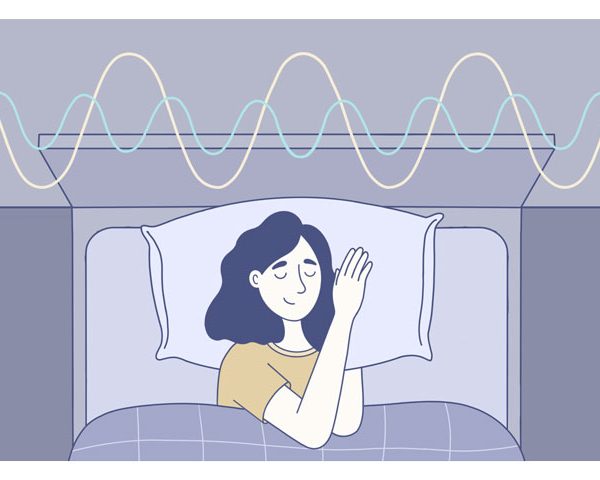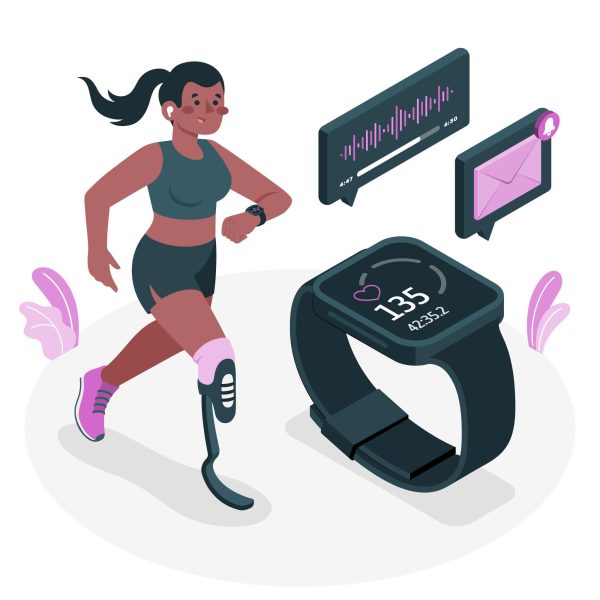Sleep is vital for health and well-being, yet many people struggle with achieving restful sleep. Sleep trackers have become increasingly popular as tools to monitor sleep and provide data that can help improve sleep cycles. This article explores how sleep trackers work, the types of data they collect, and how to use that information to optimise sleep.
Understanding Sleep Cycles
Sleep is composed of several stages, cycling between light, deep, and REM (Rapid Eye Movement) sleep. Each cycle lasts about 90 minutes, and experiencing multiple cycles throughout the night is essential for optimal health. The stages of sleep include:
- Stage 1 (Light Sleep): A transition period between wakefulness and sleep, where the body starts to relax.
- Stage 2 (Light Sleep): Heart rate and body temperature decrease as the body prepares for deep sleep.
- Stage 3 (Deep Sleep): Also known as slow-wave sleep, this is when the body repairs and regenerates tissues, strengthens the immune system, and builds bone and muscle.
- REM Sleep: The brain is active, dreams occur, and this stage plays a key role in learning and memory.
The goal of sleep optimisation is to ensure that your body goes through multiple full sleep cycles without disruption.
How Sleep Trackers Work
Sleep trackers, such as wearable devices (Fitbit, Oura Ring, WHOOP) and apps, monitor various metrics to estimate sleep stages. While they are not as precise as clinical sleep studies, they offer valuable insights that can be used to improve sleep patterns.
Common metrics recorded by sleep trackers include:
- Heart Rate: A decrease in heart rate indicates a transition to deeper stages of sleep.
- Heart Rate Variability (HRV): This is the variation in time between heartbeats and is often used to measure stress and recovery. Higher HRV typically correlates with REM sleep.
- Body Movement: Accelerometers in wearables track how much you move during the night, with long periods of stillness indicating sleep.
- Sleep Stages: Using the above metrics, sleep trackers estimate how long you spend in each stage of sleep.
- Oxygen Saturation: Some advanced trackers monitor blood oxygen levels to detect breathing irregularities such as sleep apnea.
Using Data to Optimise Sleep Cycles
Once you have sleep data from your tracker, the key is interpreting it to make meaningful improvements. Here’s how you can use the information:
1. Assess Total Sleep Time
- Track your sleep duration over several weeks to identify patterns. If you consistently get less than 7-8 hours of sleep, consider adjusting your bedtime.
- Aim to align sleep with your natural circadian rhythm, going to bed and waking up at the same time each day.
2. Monitor Sleep Quality
Check how much deep sleep and REM sleep you’re getting. On average, adults need 1-2 hours of deep sleep per night for physical recovery and about 90 minutes of REM sleep for cognitive functions. If you’re not getting enough, it might indicate sleep disruptions like stress, poor sleep environment, or excessive screen time before bed.
3. Identify Disruptions
- Look for patterns in your wake-up times during the night. Frequent awakenings could signal issues like uncomfortable room temperature, noise, or even sleep disorders.
- Sleep trackers can help detect breathing irregularities such as snoring or mild sleep apnea.
4. Test and Implement Sleep Strategies
- Adjust your routine based on the data. If you notice poor sleep quality, try sleep hygiene practices such as reducing blue light exposure before bed, establishing a calming bedtime routine, or using blackout curtains to eliminate light disruptions.
- Incorporate lifestyle changes that improve sleep: avoiding caffeine or alcohol before bed, engaging in regular physical activity, and eating a balanced diet rich in magnesium, which can improve sleep.
5. Track Progress Over Time
Continue monitoring your sleep data as you implement these strategies to see improvements. Sleep optimisation is a gradual process, and consistency is key.
Limitations of Sleep Trackers
Although sleep trackers offer valuable insights, they are not perfect. They can sometimes overestimate or underestimate time spent in different sleep stages. Research suggests that while sleep trackers are good at measuring total sleep time, their accuracy in detecting sleep stages like REM or deep sleep is still improving. If you’re experiencing significant sleep issues, consulting a healthcare professional or undergoing a clinical sleep study may be necessary.
Conclusion
Sleep trackers are a powerful tool for improving your sleep, providing data on sleep stages, disruptions, and overall sleep quality. By understanding and analysing this data, you can make adjustments to your habits, sleep environment, and lifestyle to ensure better rest and well-being. However, it’s important to use this data as a guide rather than a definitive measure, and seek professional advice when needed.
References
1. Sleep Foundation, “How Sleep Trackers Measure Sleep” – [https://www.sleepfoundation.org]
2. Nuffield Department of Clinical Neurosciences, “Are Sleep Trackers Accurate?” – [https://www.ndcn.ox.ac.uk]
3. National Institutes of Health, “Sleep Stages and Their Role in Health” – [https://www.nih.gov]





